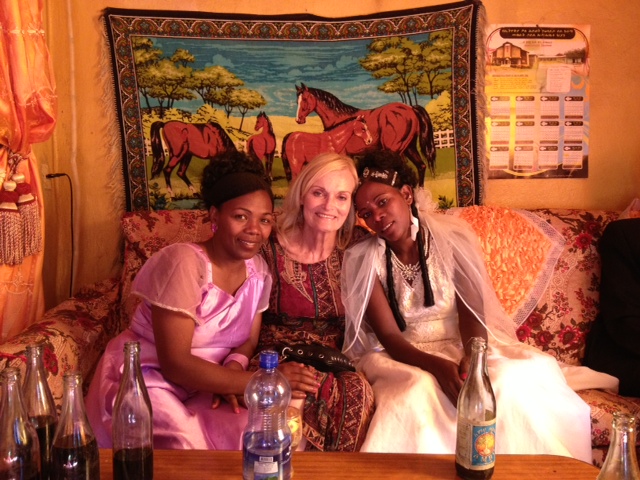Sharon Daly recently returned from five weeks in Ethiopia. The following story describes one of the highlights of her trip: attending the wedding of a young woman treated for mossy foot by her father many years ago. The following is Sharon’s story of Sitenna and her wedding.
Sitenna’s father died when she was fairly young, leaving the family destitute. Her mother sent her children off to various villages to work for other people. Sitenna became the house servant for a woman in Gununo, a town quite a ways from her mother. She was separated from her mother and siblings but took this in stride until her feet and legs started to swell and develop a bad odor. Her mistress eventually threw her out of the house and told her never to come back. Now Sitenna was homeless nike sabrina 1 brooklyn fq3381 301, exposed to the cold mountainous nights without shelter or adequate clothing.
Sitenna kept from starving by begging for food. Fortunately, someone who worked for the Mossy Foot Project met Sitenna and brought her to Soddo, where she received restorative surgery. That was fourteen years ago. Dr. Barlow, my father, met Sitenna and asked if she knew how to read or write. She told him her story and explained that as a house servant she did not have time to attend school. My dad began teaching her to read and write and Sitenna became very close to him, even calling him her father.
When my father died, we enrolled Sitenna in the first grade in a private girls’ school. Now Sitenna is in the 9th grade. When I was in Ethiopia in June, she told me that she was going to be married and that since she considered me to be her mother, she wanted me to attend her wedding.
When Sunday morning December 8th came. I was so excited. My friend Zebdewos was going to come get me and we would ride in a little 3 wheeled vehicle called a bajaj to Sitenna’s house. When we got there, she was beautifully adorned in her bridal dress, hair ornately put up, looking radiant.
Her women attendants were in the house dancing and singing. “Sitenna, you look beautiful,” I commented. She responded, “I am beautiful.”
Soon the groom and his attendants, looking handsome in their suits, approached the house dancing and singing, coming to get the bride. From there they escorted the couple to the waiting vehicle. The rest of us got on a rented bus, and drove about an hour Kaufe Adidas SUPERSTAR – Mens adidas Cushioned II 3 Pack Quarter – H05658 into the countryside, eventually turning off the main road onto a very dusty, bumpy dirt road. All the while everyone was singing and celebrating.
Finally, we turned down a little lane bordered with a bamboo fence. We knew we had arrived when people in blue and yellow choir robes and the congregation came singing, leaping, and dancing through the small opening in the fence to welcome the bridal couple.
The procession entered the mud church, which was packed with people. Two different choirs sang. The pastor preached followed by congregational singing before the wedding ceremony began.
Following the long return trip to Soddo, with parades through every town on the way back, we arrived at Sitenna’s house for the wedding feast.
The neighbors had all worked together cooking the food for a delicious meal of the native bread (injerra) and several different kinds of spicy stews (wut), which we pick up with the injerra and eat with our hands. Also they had made a special wedding drink out of barley and honey. I was amazed to find out that the lady sitting across the room from me was the one who had kicked Sitenna out of her house when she became ill with mossy foot disease. Sitenna had invited Зимовий флісовий світшот air jordan тепла кофта - 106 - Jordan Brand will be releasing two Air Jordan 1 Retro High models Varsity Red DR5415 her to come. That’s forgiveness!

Sharon with Sitenna (on the right) and Mebrat, a Mossy Foot Project employee and on of Sitenna’s bridesmaids
All the Mossy Foot staff came to celebrate and join in the feast. Afterwards, we accompanied the couple up the mountain to a beautiful spot for wedding pictures. Our joyous procession wound through Soddo led by several motorcycles, followed by the car carrying the happy couple. Tied on top of that vehicle was a mesob, the Ethiopian woven basket table. Joining them was a car full of Mossy Foot Project staff in our Land Cruiser, then a bus we had rented packed with the rest of the staff.
The joy was palpable that day. It was the celebration of joy for Sitenna but also the celebration of hope and success—a life air jordan 1 high skyline rescued from hopeless despair and an inspiration for others. Before she was treated, no one would have married her. Now Sitenna has someone to cherish her and hope for a family of her own.


